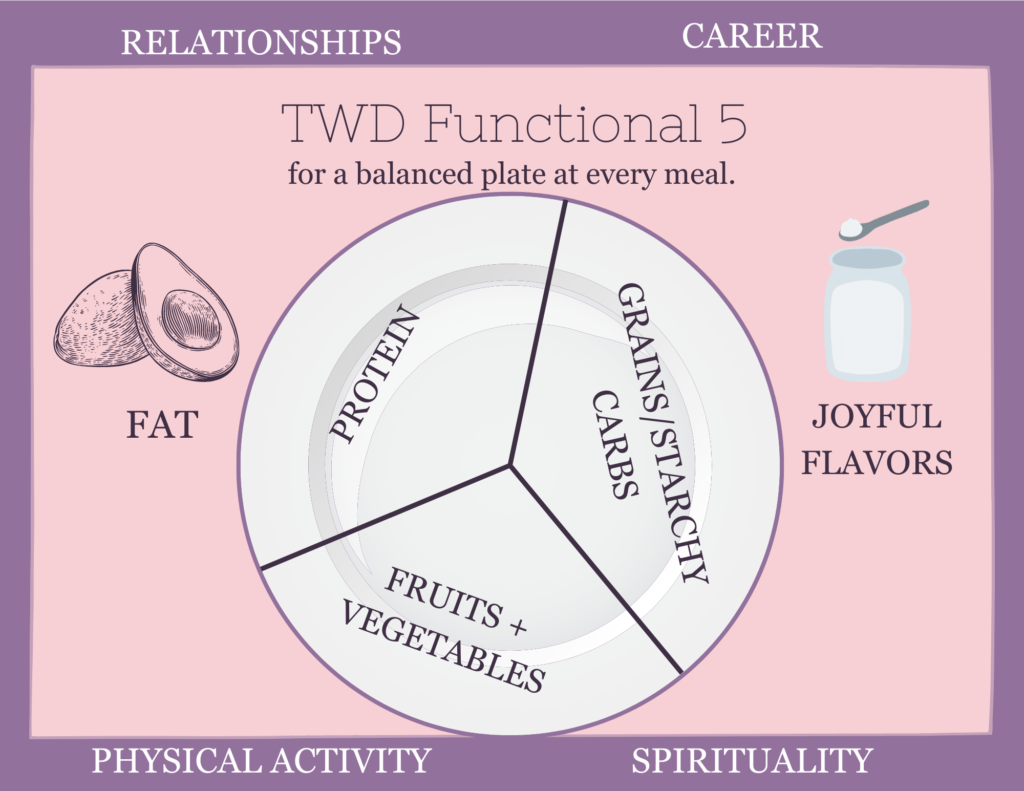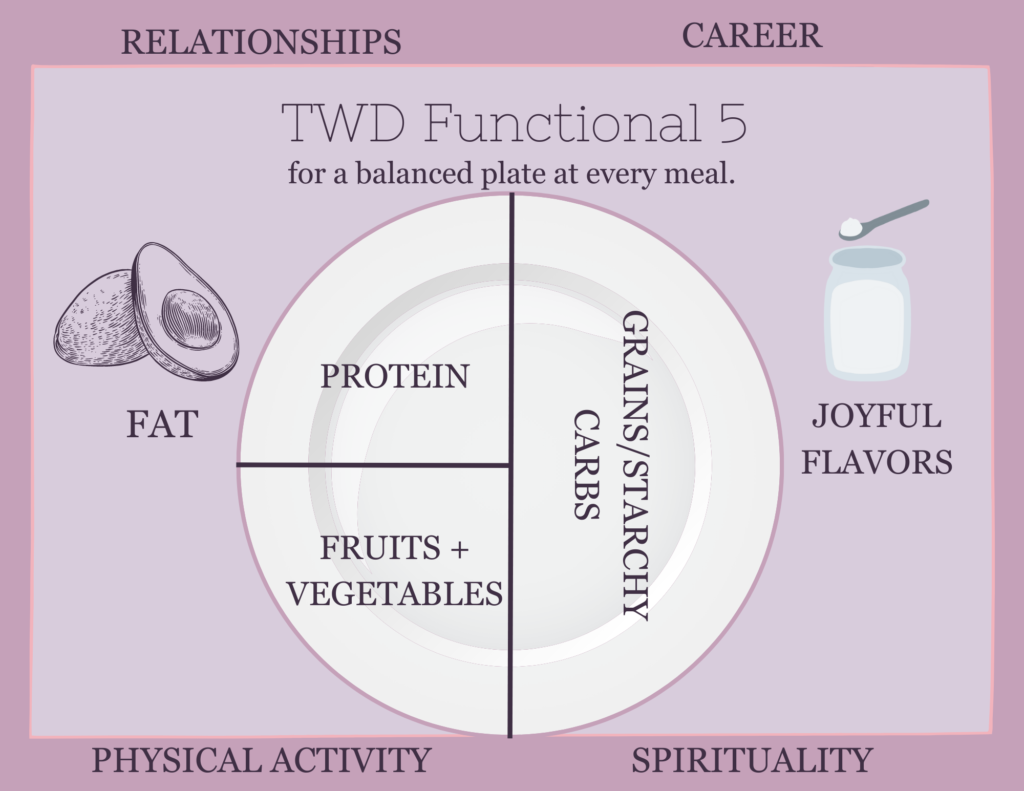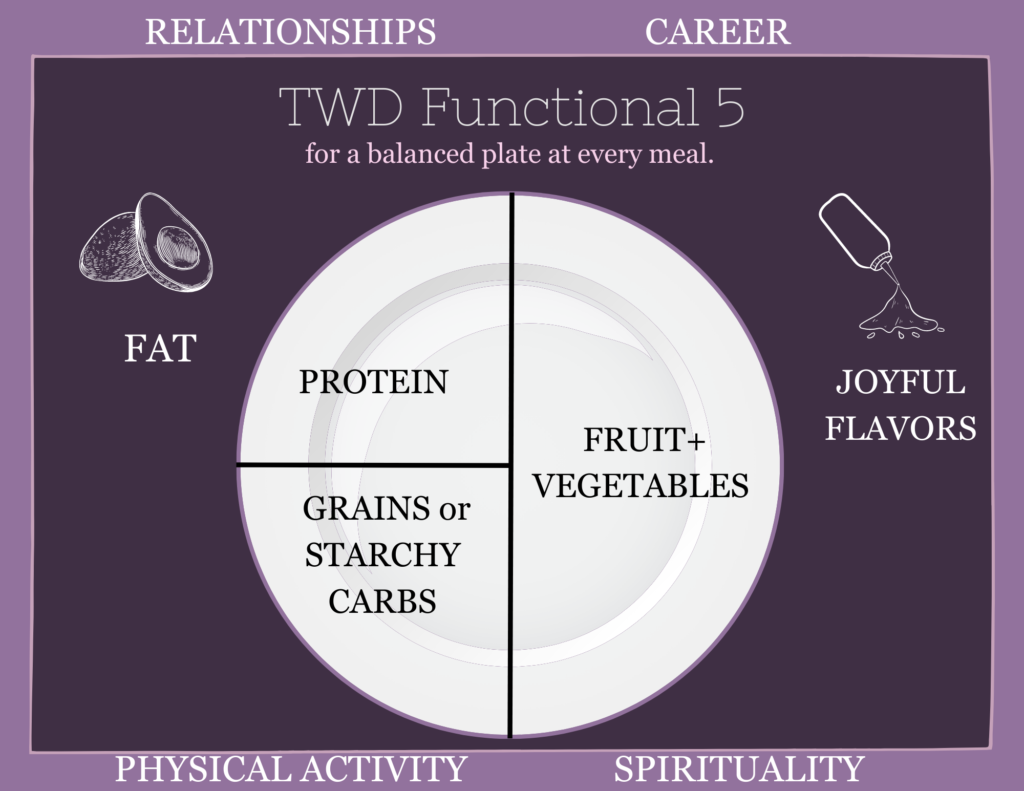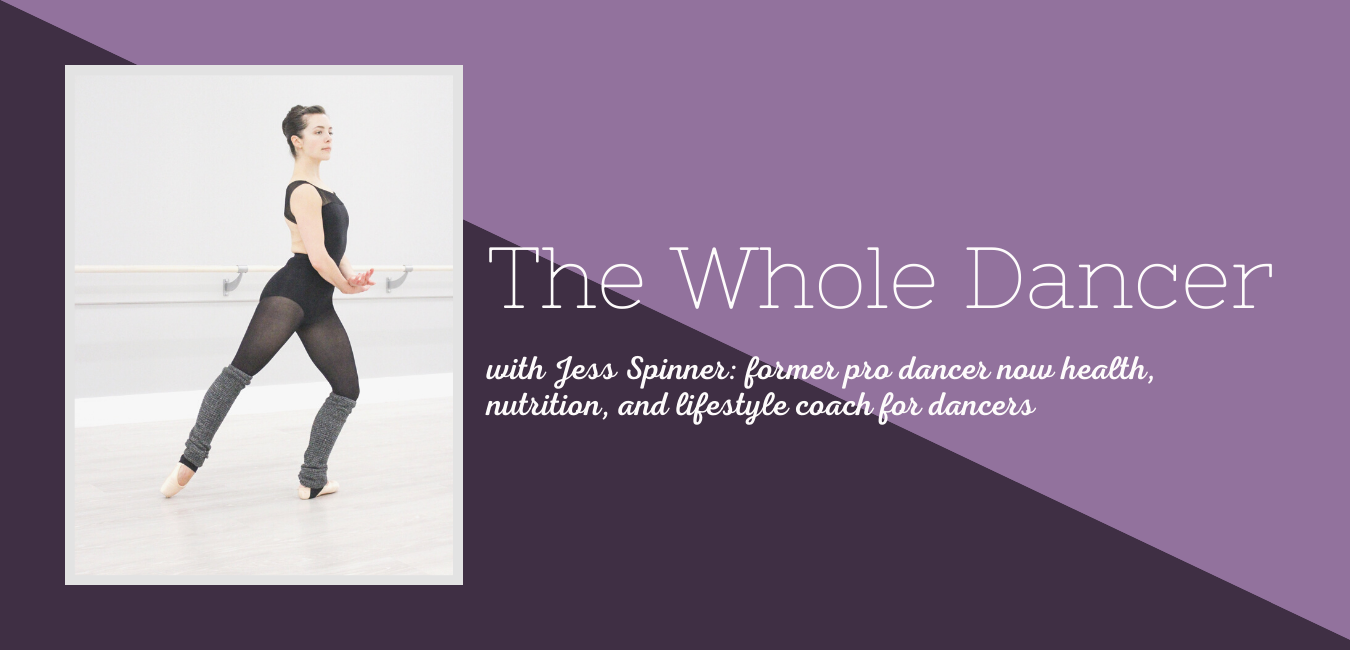Something I know dancers struggle with is how to know if they’re eating enough.
For most dancers, counting calories or macronutrients can be a slippery slope to a disordered relationship with food. The truth is, if you’re listening to your body and honoring its needs, counting really isn’t necessary.
I don’t know about you, but I’m a visual learner. It helps me to see a picture of whatever I’m trying to conceptualize in order to better understand it. So to help you feel more confident in your food choices, I created a few “plates” so you can see a visual representation of what your meals might look like.
What’s included on The Whole Dancer Plate.
The approach to nutrition for dancers here at The Whole Dancer is holistic. It’s about you as a whole person, and it’s not just about the food you eat. While there are 3 different versions of the plate, they all include the same things.
On each iteration, you’ll find protein, carbohydrates, fat, fruits, vegetables, and joyful flavors. These are all essential to find satisfaction and to meet your body’s needs. This post goes into more detail on the food elements of the plate.
The actual foods you eat are secondary foods. In addition to those, primary foods are included on The Whole Dancer plate. In Integrative Nutrition Health Coaching, your primary foods are your non-food nourishment. They include career, spirituality, relationships, and physical activity. As a dancer, even if you’re not pro yet, if you’re pursuing dance at a high level, you might consider dance your “career” element.
There are three different versions of The Whole Dancer Plate.
You’re not the same as your friend; therefore, your needs are not the same. Your needs also vary from day to day and week to week. If you experience menstrual cycles, your needs are going to change depending on where you are in your cycle.
One version of the plate includes equal amounts of grains or starchy carbs, protein, and fruits and/or vegetables. The next involves filling half your plate with grains or starchy carbs, ¼ of your plate with fruits and/or vegetables, and ¼ of your plate with protein. The final version of the plate fills half the plate with fruits and/or vegetables, ¼ of the plate with protein, and ¼ of the plate with grains or starchy carbs.



With every version of the plate, you should include some dietary fat. You might include oil or butter for cooking or topping your food, and that works great. Every plate also includes joyful flavors. Your food should be delicious! Even the most nutrient-dense meals should taste good to you. You never have to compromise taste in order to promote health.
Your joyful flavors might come from sauces, spices, sides, or other meal additions you enjoy.
5 things to consider when creating your plate.
Make sure that you’re representing all the food groups at your meals. If you’re unsure of food sources for carbs, fat, or protein, that’s something you can reliably google to get some ideas. Search for “food sources of dietary fat” and you’ll get a good list.
Truly fill your plate. Follow your desires at each meal to choose the plate that’s best for you and give yourself generous servings of food. Once you start eating, you can follow your body’s cues so you know when you’re satisfied.
Eat consistently throughout the day. Don’t let more than 2–4 hours pass between meals or you risk feeling ravenous and out of control. When you eat throughout the day and include meals and snacks, you’ll keep your blood sugar, energy levels, and moods stable.
Include a variety of different foods throughout the day and week. Dancers will often ask how to ensure they’re giving their bodies what they need. Eating all different kinds of foods and including various sources of protein, carbs, fat, and nutrients is going to help you cover your bases.
Pay attention to what works for you. Notice how you feel after eating different meals. Some foods might not work around hours of dancing. That’s OK. If there’s a food you love but it doesn’t feel good to eat before dancing, save it for a different meal or snack during the day. Don’t let the eating habits of those around you impact your personal choices.
If you’re struggling to find a more balanced approach to food, schedule a free coaching call!
If your food anxieties feel extreme or unmanageable, seek eating disorder treatment or therapies. For resources, click here.

Pingback:Understanding Your Fuel Needs as a Dancer - The Whole Dancer